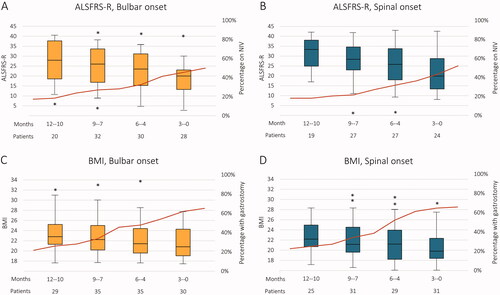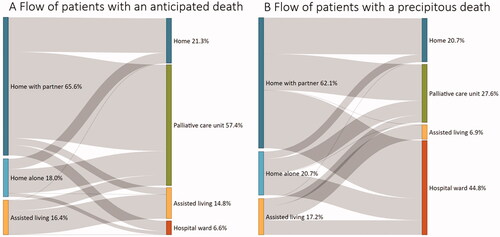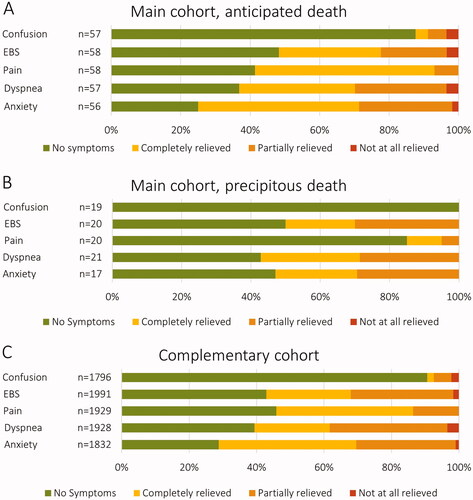Figures & data
Table 1 Patient characteristics of the main cohort.
Table 2 Cause of death, time to death, and persons present at death in ALS patients.
Figure 1 (A–D) ALSFRS-R and BMI 12 months preceding death in ALS. The box plots display the longitudinal decline in ALSFRS-R (A,B) and BMI (C,D) per three months during the 12 months preceding death in ALS patients with bulbar (A,C) vs. spinal (B,D) onset. The right axis shows the percentage of patients on non-invasive ventilation (NIV) or with gastrostomy as indicated by the red line.

Figure 2 (A,B) Flow of ALS patients from their permanent place of residency to the place of death. Shown separately for patients with an anticipated (A) vs. precipitous (B) death.

Figure 3 (A–C) Symptoms at the end of life in ALS patients. End of life is defined as the week preceding death. Shown separately for patients of the main cohort with an anticipated (A) vs. precipitous (B) death, as well as for patients from a large complementary cohort with either an anticipated or a precipitous death (unknown status) (C). EBS: excessive bronchial secretions.

Table 3 Comparison of key variables in patients with low vs. high symptom burden in a complementary cohort of 2224 patients with ALS.
Supplemental Material
Download MS Word (21.7 KB)Data availability statement
The study is based on data from the Swedish Motor Neuron Disease Quality Registry and the Swedish Quality Registry of Palliative Care. Having obtained the appropriate approval from a research ethics board, these data can be accessed from the registry offices upon request. Data obtained from medical records can be accessed from the principal author upon request after obtaining the appropriate ethics board approval.
